Ever since its initial release in September 2016, Tiktok has been the source of many online trends. Lately, however, Tiktok became the platform that started a new term that may have just changed the workplace: Quiet Quitting.
Although the definition of the term quiet quitting is not new, putting a word that encompasses what most of the workforce is going through has catapulted awareness of this corporate phenomenon.
It started out as a Tiktok video explaining an Insider article on employees taking a step back from “hustle culture” by career coach Bryan Creely in March of 2022. Months later, we can safely say that the term Quiet Quitting has now taken on a life of its own with thousands of videos on the platform and over 162 million views. In this article, we discuss what you need to know about quiet quitting, how to manage it, and when to worry.
What the *bleep* is Quiet Quitting and is it even real?
By definition, quiet quitting is described as “kicking back and taking it easy” in the workplace instead of leaving the job. Another viral Tiktok video by user @zaidleppelin describes the term as “not outright quitting your job, but quitting the idea of going above and beyond. You’re still performing your duties, but you’re no longer subscribing to the hustle culture mentality that work has to be your life — the reality is, it’s not.”
Now there’s one question that everyone has in mind: is quiet quitting just another trend or is it real? A September 2022 research by Gallup, a global analytics and advice firm called, found that more than half of the U.S. workforce is quiet quitting.
“At least 50% of the U.S. workforce is quiet quitting – probably more”
A big factor that may have contributed to the quiet quitting trend is the drop in Employee Engagement which started in the second half of 2021. The rate of Actively Engaged Employees is steadily at the 30% average but the rate of Disengaged Employees continues to rise.

Source: https://www.gallup.com/
Is Quiet Quitting Good or Bad?
With the above data in mind, most employers, managers, and professionals are asking a vital question: Is quiet quitting good or bad? If you ask us, the verdict is still neutral. Whether quiet quitting is good or bad is really subjective and depends on how an employee approaches the trend.
The Good:
Workplace culture experts believe that quiet quitting, if approached and handled correctly, may work for the good of the company and its employees. According to a CNBC article , experts believe that quiet quitting can help employees “refocus on their needs outside of work and hopefully lead them towards recovering from their burnout and getting clear on their needs and boundaries within the workplace moving forward.”
There’s no doubt that employees are more productive when they are rested, able to take a break from work, and recharged. If quiet quitting help employees regain control and practice work life balance without letting their deliverables or key performance indicators (KPIs) suffer, then there’s no harm.
The Bad:
On the other hand, quiet quitting can also cause employees to become totally disengaged and foreign from their work. If you, as an employee, reach a point where you only go through the motions just to “get it over with,” then this concept of quiet quitting is preventing you from being proud of your work and the contributions you make.
If you find yourself rejecting opportunities or projects that can help advance your skills and grow your career, then quiet quitting is affecting you just as negatively as it does your company.

Quiet Quitting is Changing the Workplace
The viral trend of Quiet Quitting is definitely a double-edged sword. But whether good or bad, quiet quitting is already changing the workplace. The concept is already starting to open more conversations about burnout and exhaustion in the workplace. The trend has also empowered professionals to regain control over their personal time and inspired others to re-evaluate their priorities. With a new generation of professionals joining the workforce, more and more employees are looking for respect over their personal and professional boundaries.
As an employer, it’s important to remember that quiet quitting is not necessarily an enemy. At the end of the day, establishing personal limits and practicing genuine work-life balance will prevent burnout, work anxiety, and disengagement in your employees.
Want more informational content?
Follow us on our official social media accounts @SourcefitPH!
Looking for a company that will help you reach your full potential?
Start your adventure with Sourcefit today! Check out our latest job openings at https://sourcefit-philippines.breezy.hr/














